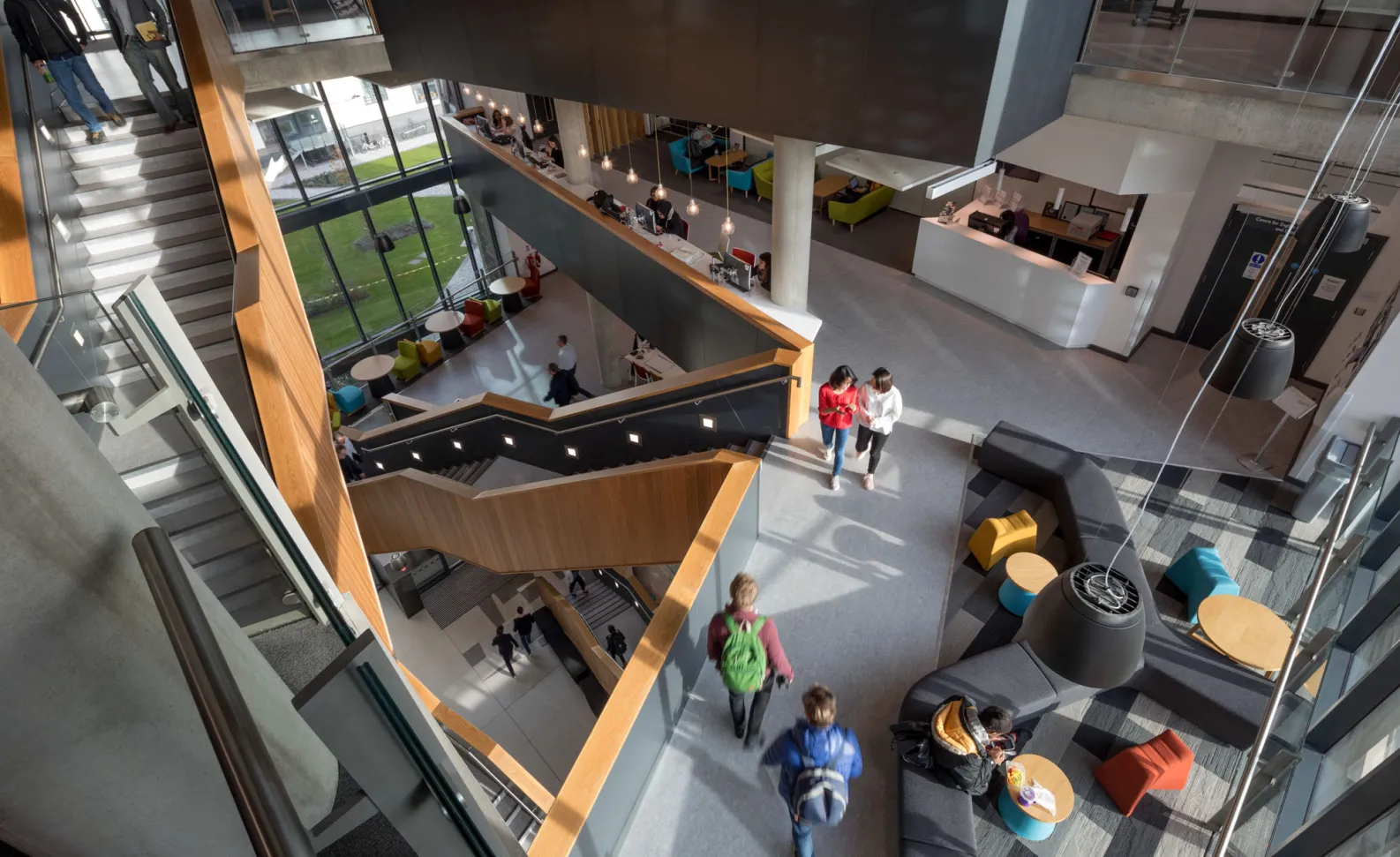Insight
Navigating the estate challenges universities face today
22 Oct 2025

Matt Hall
National Director
University estates today are expected to embody an institution’s values, enhance the student numbers and experience, support collaboration, and meet ambitious sustainability goals. Delivering on all of these demands while managing finite resources is one of the sector’s greatest challenges.
Here, Matt Hall, National Director of Project Management at Pick Everard, explores the most prominent challenges and how we can help turn them into opportunities.
International student enrolment
The UK’s global reputation for higher education remains strong, but recent figures show a sharp decline in international student numbers. The Office for National Statistics (ONS) reported that net migration fell by 50% to 431,000 in the year to December 2024, driven in part by tighter visa restrictions.
The decision to limit international dependants has resulted in an 86% (105,000) drop in study-related dependants, a change already being felt across campuses.
“International students make up a vital part of the higher education ecosystem. A reduction in their numbers impacts funding, accommodation, and estate investment. Universities are now at a crossroads where they are being forced to make difficult decisions about where and how to invest. Pick Everard can assist through this process with our experience and multi-disciplinary skillset to deliver estate strategies,” Matt commented.
Funding
The knock-on effect is a reduction in income available to maintain, develop, or expand estates. With fewer enrolments, many universities face constrained budgets at a time when financial pressures are already mounting. Rising construction and maintenance costs, higher energy prices, and increasing operational demands continue to stretch capital budgets, while changes to funding models and government support add further uncertainty.
Matt added, “Every capital project now needs to demonstrate clear and measurable value. We’re seeing universities take a more strategic approach, prioritising refurbishments and adaptive reuse projects over new builds. The goal is to make use of existing assets and futureproof the estate.”
Balancing old with the new
The UK is home to some of the world’s most celebrated universities, from the prestigious “red brick” institutions to the historic colleges of Oxford and Cambridge. These estates are treasured not only for their academic contribution but also for their architectural and cultural significance.
Preserving that heritage while adapting to modern needs presents a unique challenge. Many historic buildings carry substantial maintenance burdens and were not designed to meet current expectations for accessibility, safety, or technology. Integrating modern facilities without compromising listed features demands highly specialist knowledge.
This challenge is further complicated by environmental ambitions. Older buildings are often among the least energy-efficient on campus, and retrofitting them to meet net zero targets requires solutions that balance conservation with performance. Planning restrictions can extend project timelines, requiring detailed negotiation with heritage bodies and local authorities.
For many universities, the answer lies in a hybrid approach, combining sensitive refurbishments with contemporary developments that complement rather than compete with the historic fabric. The result is a campus that honours tradition while offering spaces fit for the future.
Net zero
The urgency of climate change has placed sustainability, net zero and embodied carbon at the centre of campus planning. Universities across the UK are committing to ambitious net zero targets, creating significant implications for estates teams.
Achieving these ambitions means addressing everything from building performance to energy sourcing and waste management. Retrofitting existing stock is a major priority, yet it remains one of the most challenging tasks given the scale and complexity of older estates. Whereas new developments must meet high environmental standards, with frameworks such as BREEAM becoming increasingly standard. The task requires collaboration across faculties, operations, and estates to ensure sustainability is embedded into every decision.
Matt said, “Our work in this area focuses on achievable pathways to net zero. That means taking a whole-estate view, from reducing embodied carbon to improving energy performance across existing assets. By embedding circular economy principles, we can help universities reduce waste, extend building life cycles, and meet sustainability targets.”
Student expectations
Teaching spaces are evolving beyond fixed lecture theatres into adaptable, technology-rich environments. Students and staff seek spaces that support both formal learning and informal collaboration, with multifunctional areas, breakout zones, and social hubs becoming essential features of a modern campus. These changes require careful consideration in masterplanning, with flexibility and adaptability embedded into designs so estates can respond to evolving needs over time.
Compliance and safety
Universities carry a responsibility to meet rigorous health, safety, and accessibility standards. Compliance is an ongoing priority, encompassing everything from fire safety and accessibility to emerging requirements under the Building Safety Act.
Large campuses, with diverse building types and significant footfall, demand robust governance to manage these obligations effectively. Successful institutions embed compliance into planning and operations, ensuring it is part of a proactive strategy rather than a reactive process. This approach protects the wellbeing of the campus community and underpins the credibility of the university itself.
We understand
At Pick Everard, we understand these challenges because we’re working alongside universities every day to solve them. Our multi-disciplinary teams combine design and management services to deliver estate strategies that can save time, money and resources while aligning with institutional goals.
Contact us today to see how we can support your long-term estate vision.
Education
We are privileged to work on hundreds of education projects that are improving the lives of children and young adults from pre-school, right through to higher education.
